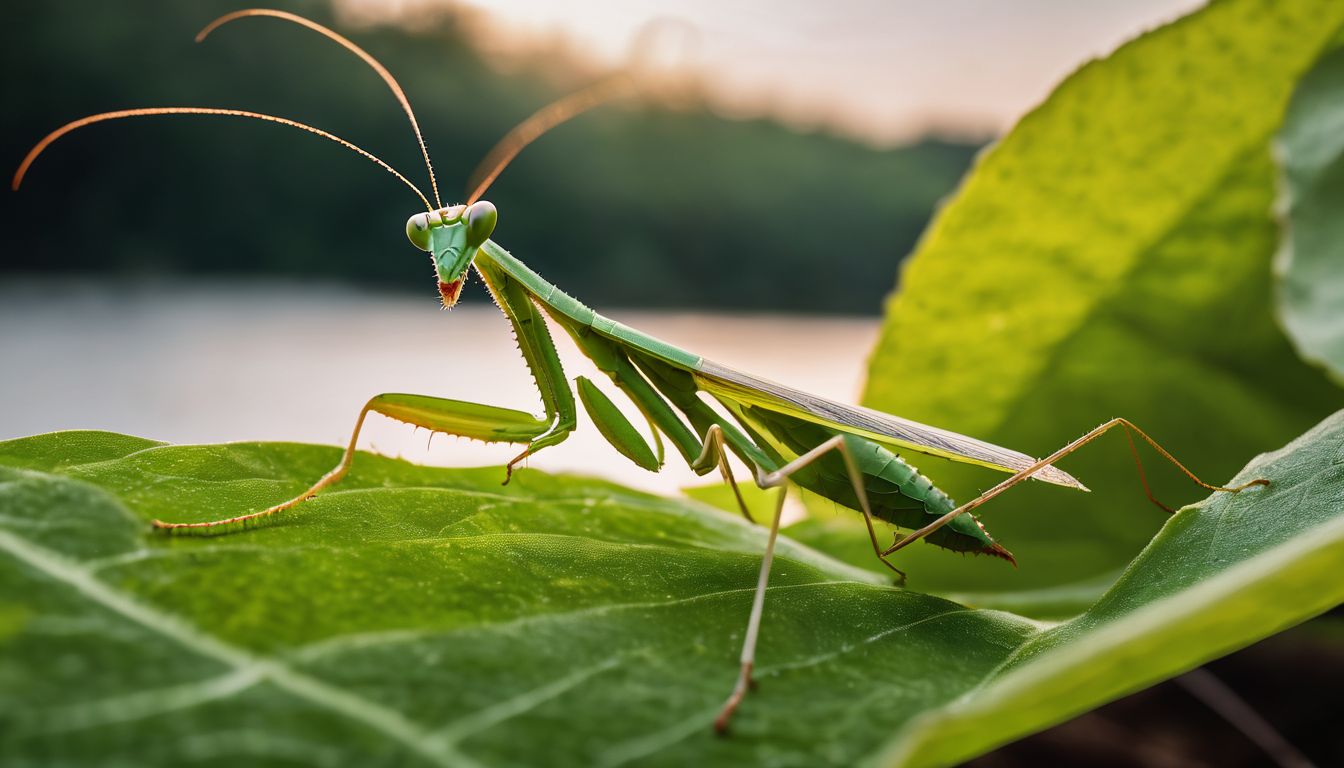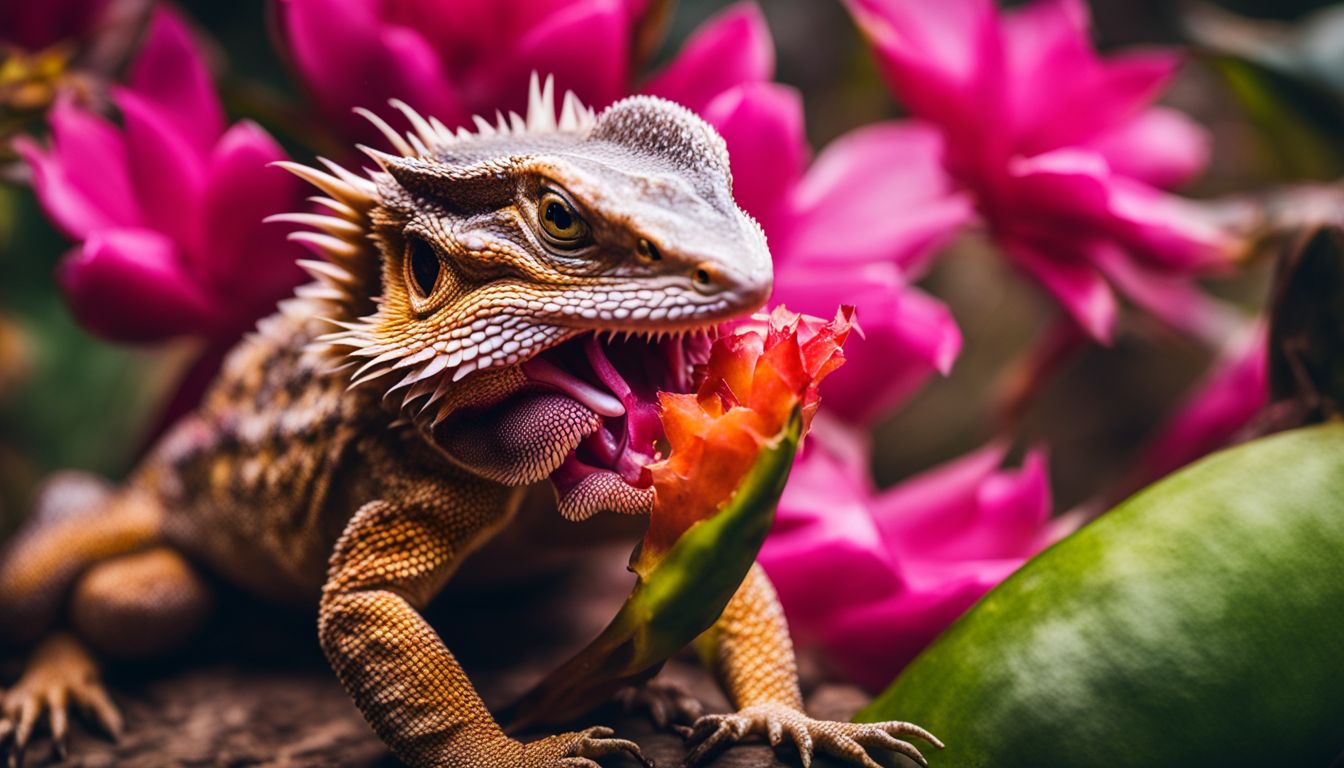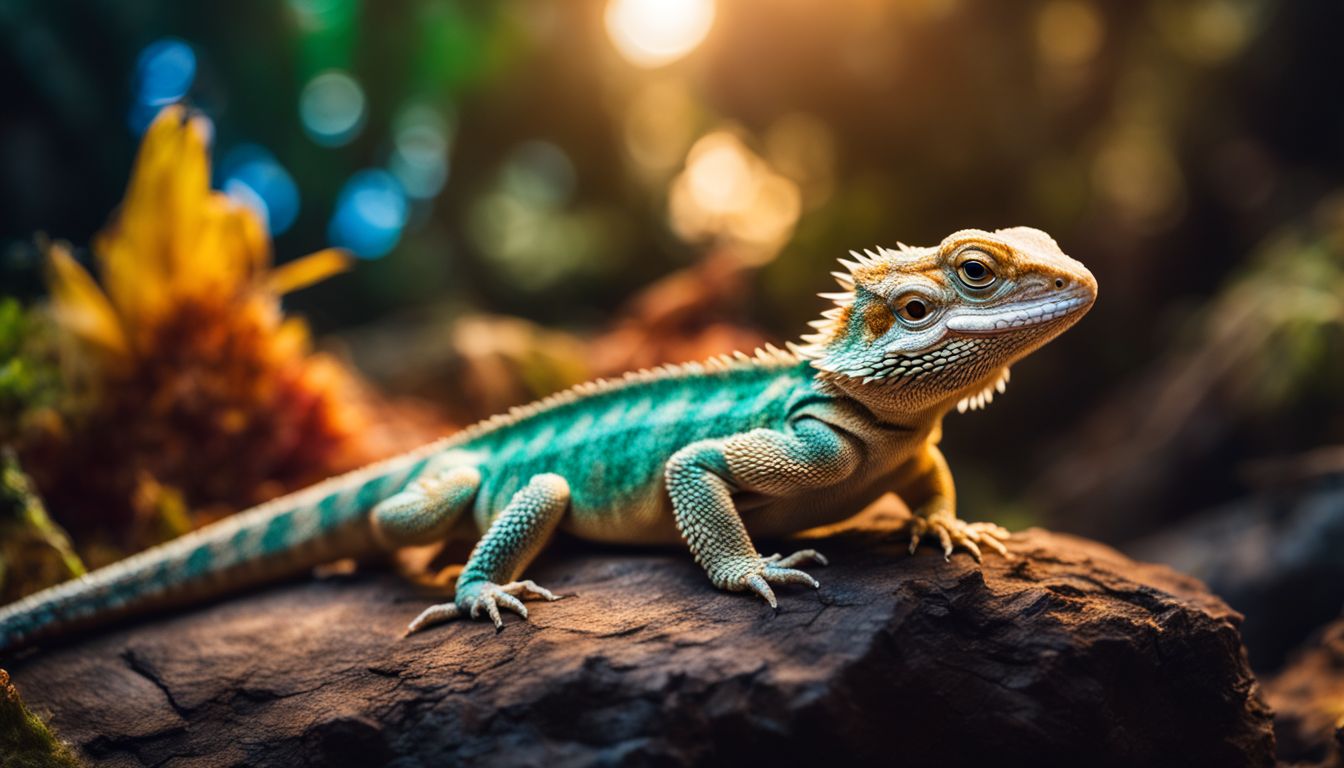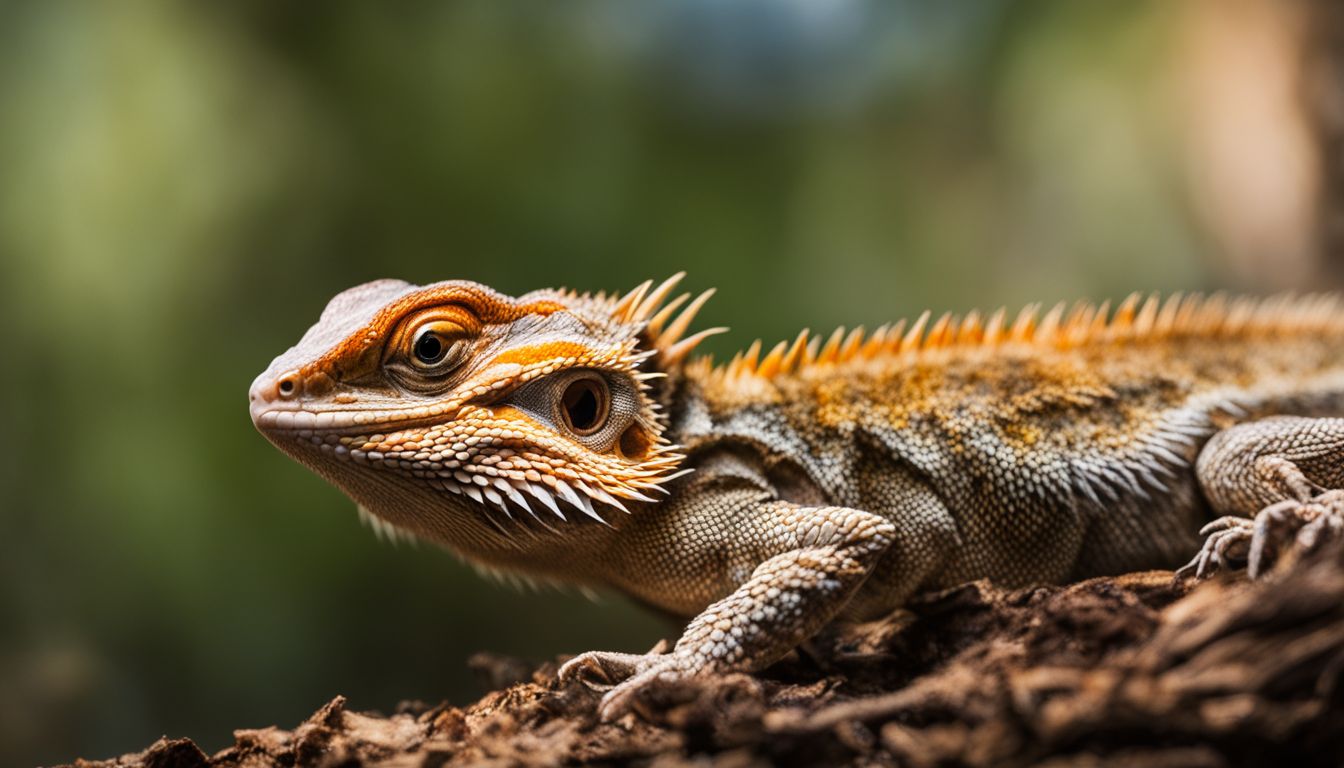Have you ever wondered what a praying mantis might snack on in the wild? These intriguing insects are known for their voracious appetites, including spiders among their many potential meals.
This blog post will delve into the world of praying mantises and uncover whether these hunters add eight-legged critters to their menu. Stay tuned to explore the fascinating dining habits of one of nature’s most formidable predators!
Key Takeaways
- Praying mantises are known to eat spiders as part of their diverse diet, using their strong front legs and clever camouflage to capture and consume them.
- Spiders provide important nutrients for praying mantises, including proteins, fats, vitamins, and minerals that contribute to their growth and overall health.
- Understanding the feeding habits of praying mantises is crucial for pest control and maintaining ecological balance by controlling insect populations.
Praying Mantis: The Insect Predator
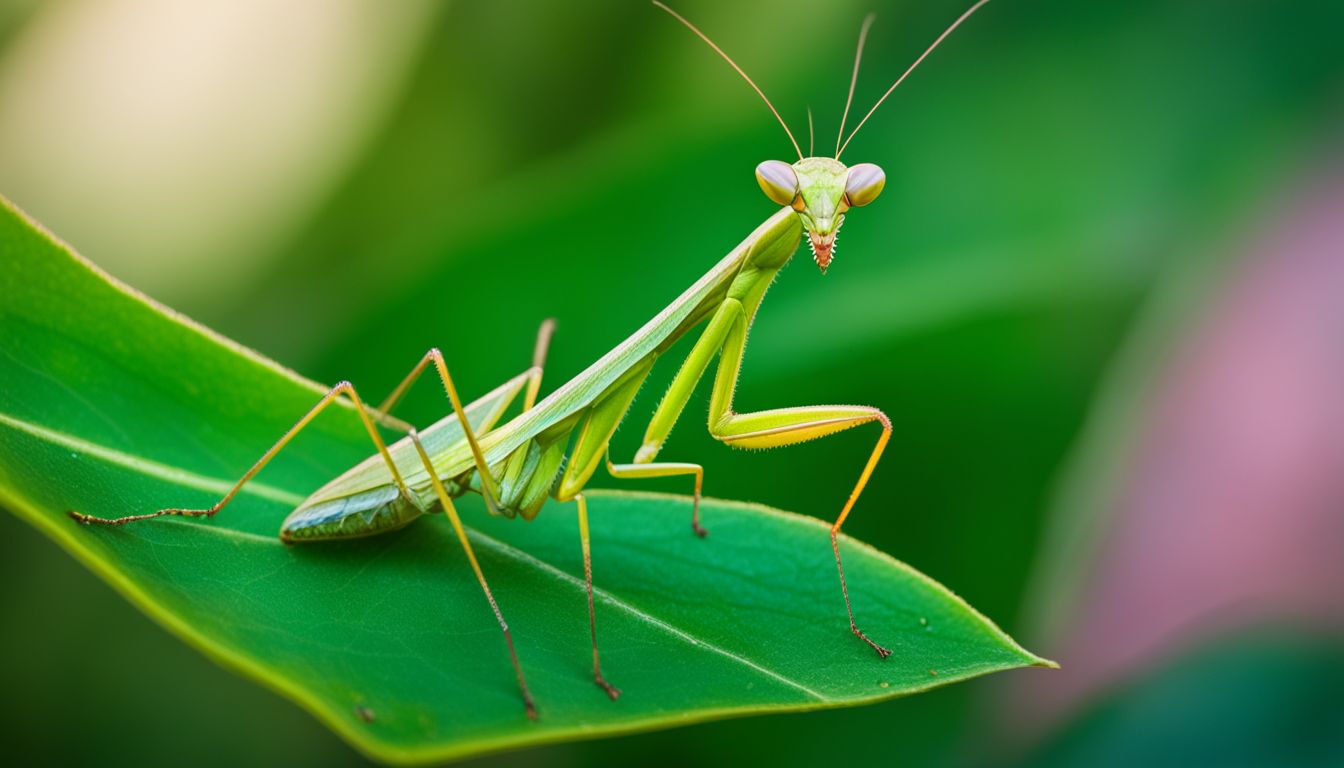
Praying mantises are known for their diverse diet, which includes grasshoppers, crickets, lizards, beetles, frogs, caterpillars, butterflies, mosquitoes, bats, and cockroaches. They are also known to include spiders in their meals.
The diverse diet of praying mantises
Praying mantises are like nature’s tiny lions. They hunt many different bugs and even small animals. Mantises munch on crickets, grasshoppers, and ants. Sometimes they eat bigger things like birds and fish too.
They grab whatever moves and fits in their mouths. These tough insects will also chow down on tiny spiders. Even though a spider might bite, a praying mantis can still make it a meal.
This shows just how fearless these little green hunters are!
Inclusion of spiders in their meals
Praying mantises are serious hunters and they’re not afraid to take on spiders. Their meals often include these eight-legged creatures. These carnivores use their strong front legs to grab spiders before eating them.
Mantises learn what food tastes good by using their senses, like how it smells or moves. They know spiders are good to eat. Spiders give them lots of energy for hunting and laying eggs.
This is why you might find a praying mantis hanging around a web, waiting for a chance to snatch up its spider owner!
The Hunting Techniques of Praying Mantises
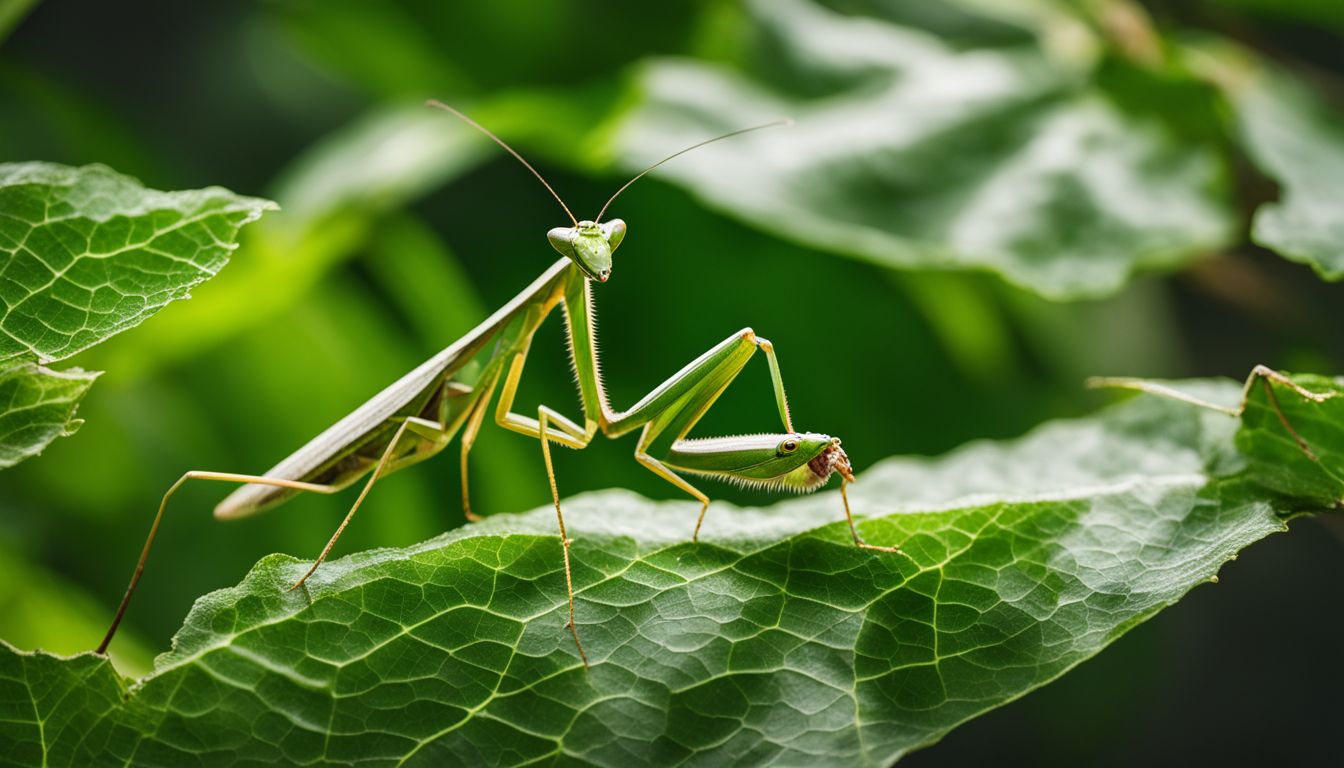
Praying mantises are skilled ambush hunters, using their camouflaged bodies and slow movements to sneak up on their prey. They rely on stealth and precision when capturing spiders and other insects.
How praying mantises capture their spider prey
Praying mantises are sneaky hunters. They use their natural camouflage to blend into the environment, like leaves or sticks. This helps them hide from spiders that might be looking for food.
Their eyes are really good at seeing movement, even from far away, which is perfect for spotting a spider without being seen.
Once they see a spider, mantises stay very still and wait for the right moment to attack. Then they strike super fast with their front legs that have sharp spikes on them. These spiky legs grab hold of the spider before it can run away or fight back.
After catching a spider, praying mantises eat it right there! They are strong predators who know how to catch tricky prey like spiders with ease.
The Role of Spiders in the Diet of Praying Mantises
Spiders play an important role in the diet of praying mantises, providing them with essential nutrients and contributing to their overall health. To learn more about the diverse diet of praying mantises, continue reading.
Nutritional benefits of spiders for praying mantises
Spiders are an important part of a praying mantis’ diet, offering essential nutrients like proteins and fats. These nutrients help mantises grow and stay healthy, contributing to their overall well-being.
Spiders also provide a diverse range of vitamins and minerals that are crucial for the mantis’ development, making them an invaluable food source.
The nutritional benefits derived from consuming spiders enable praying mantises to thrive in various environments, supporting their role as effective predators and helping maintain ecological balance by controlling pest populations.
Types of spiders commonly eaten by praying mantises
Praying mantises often feast on a variety of spider species. They have no preferences and will consume whatever kind of spider they can capture, from small orb-weavers to jumping spiders.
Mantids are not picky eaters when it comes to spiders, as long as they are somewhat accessible and within the mantis’s size range.
Mantids find wolf spiders, cellar spiders, crab spiders, and even daddy long-legs appealing. These arachnids make for sufficient prey due to their smaller sizes compared to bigger tarantulas or large web-building varieties like garden or orb weavers.
Do Praying Mantises Eat Spiders?? Exploring the Facts
Praying mantises are known to eat spiders as part of their diverse diet. They often catch live spiders and consume them using their strong mandibles. This predatory behavior makes praying mantises natural enemies of spiders in their habitats, contributing to the balance of insect populations.
Understanding the eating habits of praying mantises can shed light on how they interact with other insects in their ecosystems.
6. Frequently Asked Questions About Praying Mantis Diets.
Frequently Asked Questions About Praying Mantis Diets
– Can praying mantises eat large spiders?
– Are there any risks to mantises when eating spiders?
Can praying mantises eat large spiders?
Praying mantises are indeed capable of consuming large spiders. These carnivorous insects have a diverse diet, and larger spiders are included in their meals. While some spiders may attempt to defend themselves by biting the mantis, they still serve as a valuable food source for these predatory insects.
Despite their size difference, praying mantises can successfully hunt and consume large spiders as part of their regular diet.
Are there any risks to mantises when eating spiders?
Eating spiders can be risky for mantises. When munching on a spider, mantises might be vulnerable to becoming prey themselves. Larger animals like frogs or bigger spiders could see the mantis as a tasty meal while it’s busy eating its own spider snack.
Overall, there are some risks for mantises when they eat spiders.
The Importance of Understanding Praying Mantis Feeding Habits
Understanding the feeding habits of praying mantises is important for pest control and gaining insights into their ecological impact. By knowing what they eat and how they hunt, we can better understand their role in balancing ecosystems and controlling insect populations.
Implications for pest control
Praying mantises can be beneficial for pest control by consuming harmful insects like moths and aphids, helping to keep their populations in check. However, it’s important to monitor their impact on other beneficial insects like bees and fruit flies to ensure a balanced ecosystem.
Understanding the dietary habits of praying mantises is crucial for effective pest management and maintaining ecological balance in the environment.
Insights into the feeding habits of praying mantises not only aid in pest control but also offer valuable knowledge about managing their influence on other important insect species.
This understanding is vital for creating sustainable pest management strategies that harness the predatory nature of praying mantises without disrupting the delicate harmony of beneficial insects in our surroundings.
Insights into the ecological impact of mantis predation
Praying mantises play a crucial role in controlling pest populations, including destructive insects that harm plants. By consuming these pests, mantises help maintain the balance of the ecosystem and reduce the need for chemical insecticides.
Additionally, their predation on spiders and other prey contributes to the natural regulation of various insect populations. This can prevent outbreaks of certain species, which could otherwise have adverse effects on agricultural crops and local flora.
The ecological impact of mantis predation extends to their significance in food webs. As generalist predators, they occupy an essential niche by preying on a wide range of organisms like insects and spiders.
Conclusion
In conclusion, praying mantises do eat spiders, but they are not their main food. They use their clever camouflage to sneak up and catch spiders for a meal. Even though it can be risky with the possibility of being bitten, mantises will still munch on spiders as part of their diet.
Understanding the eating habits of praying mantises gives insight into how these fascinating insects survive in the wild and interact with other creatures in their environment.
FAQs
1. Do praying mantises really eat spiders?
Yes, praying mantises eat spiders. They are predators that catch and eat many kinds of insects and small animals.
2. How do praying mantises catch their food?
Praying mantises use a surprise attack to catch their food. They wait quietly and then quickly snatch their prey with their front legs.
3. Can a praying mantis eat big bugs or animals?
A praying mantis can eat bigger bugs, and sometimes it might even try to eat small mice or hummingbirds!
4. What kind of head do praying mantises have?
Praying mantises have special triangular heads that help them look around for food.
5. Are there different kinds of praying mantises?
Yes, there are many types like the Chinese Mantid (Tenodera sinensis) and the European Mantis.
6. Does anything want to hurt a praying mantis?
Some creatures like birds, bats using echolocation, parasitoid wasps could harm a praying mantis because they too are looking for food.

